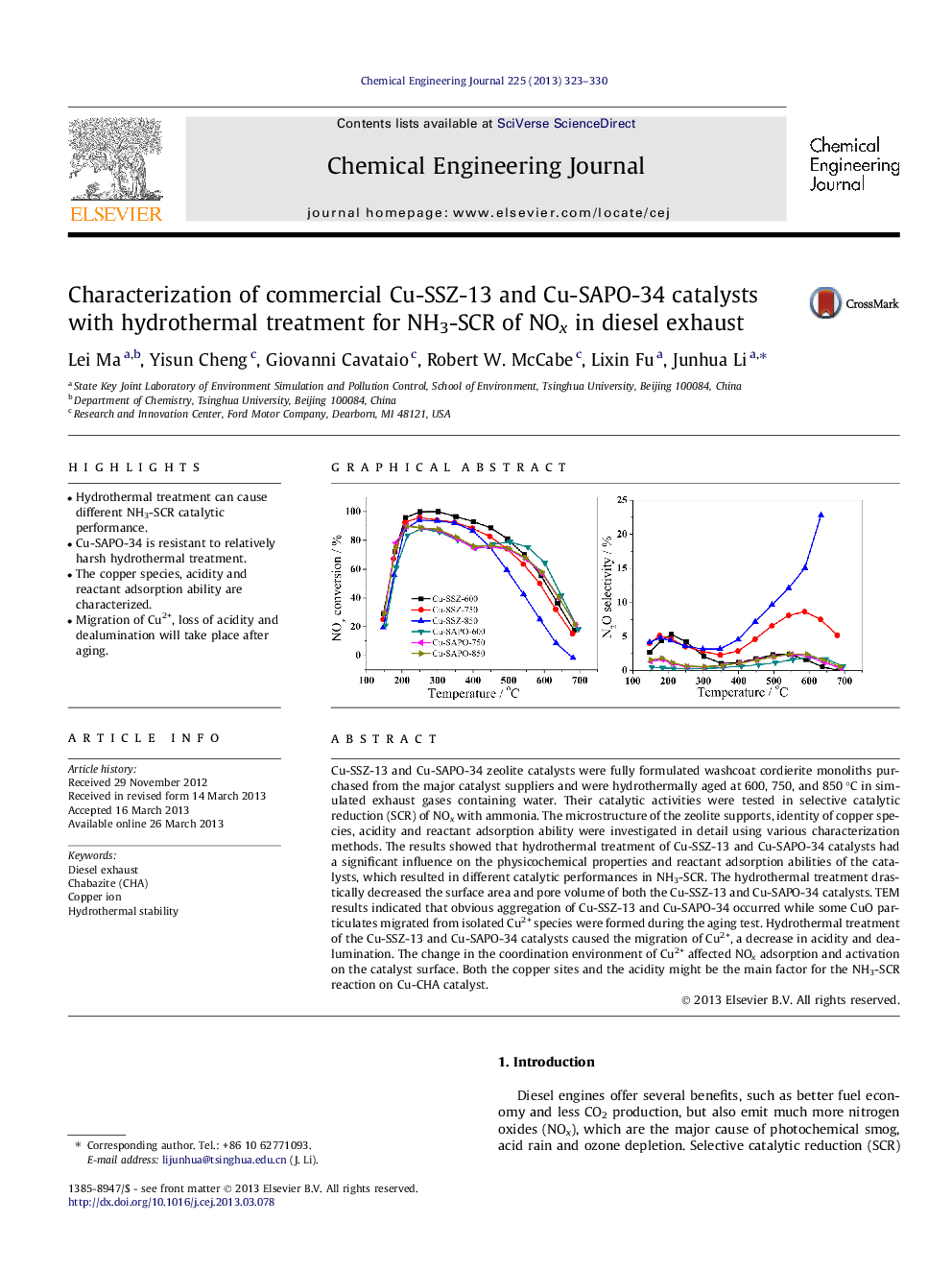| Article ID | Journal | Published Year | Pages | File Type |
|---|---|---|---|---|
| 148681 | Chemical Engineering Journal | 2013 | 8 Pages |
•Hydrothermal treatment can cause different NH3-SCR catalytic performance.•Cu-SAPO-34 is resistant to relatively harsh hydrothermal treatment.•The copper species, acidity and reactant adsorption ability are characterized.•Migration of Cu2+, loss of acidity and dealumination will take place after aging.
Cu-SSZ-13 and Cu-SAPO-34 zeolite catalysts were fully formulated washcoat cordierite monoliths purchased from the major catalyst suppliers and were hydrothermally aged at 600, 750, and 850 °C in simulated exhaust gases containing water. Their catalytic activities were tested in selective catalytic reduction (SCR) of NOx with ammonia. The microstructure of the zeolite supports, identity of copper species, acidity and reactant adsorption ability were investigated in detail using various characterization methods. The results showed that hydrothermal treatment of Cu-SSZ-13 and Cu-SAPO-34 catalysts had a significant influence on the physicochemical properties and reactant adsorption abilities of the catalysts, which resulted in different catalytic performances in NH3-SCR. The hydrothermal treatment drastically decreased the surface area and pore volume of both the Cu-SSZ-13 and Cu-SAPO-34 catalysts. TEM results indicated that obvious aggregation of Cu-SSZ-13 and Cu-SAPO-34 occurred while some CuO particulates migrated from isolated Cu2+ species were formed during the aging test. Hydrothermal treatment of the Cu-SSZ-13 and Cu-SAPO-34 catalysts caused the migration of Cu2+, a decrease in acidity and dealumination. The change in the coordination environment of Cu2+ affected NOx adsorption and activation on the catalyst surface. Both the copper sites and the acidity might be the main factor for the NH3-SCR reaction on Cu-CHA catalyst.
Graphical abstractFigure optionsDownload full-size imageDownload as PowerPoint slide
